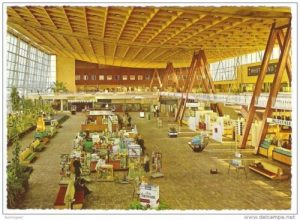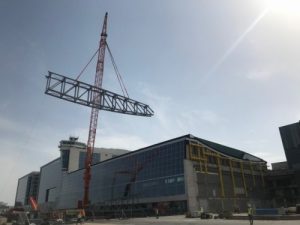Wizz Air, la compagnie aérienne low-cost à la croissance la plus rapide d’Europe, annonce une expansion majeure sur le marché ukrainien avec un doublement de sa capacité, suite à la signature de l’accord ‘Open Skies’ entre l’UE et l’Ukraine le 12 octobre 2021. En conséquence, Wizz Air assurera des vols entre Brussels South Charleroi Airport et la capitale ukrainienne KIev, à partir du 19 décembre 2021. À partir du 1er juin 2022, les avions de WIZZ assureront également la liaison entre l’aéroport de Charleroi et Lviv. Toutes les nouvelles routes seront desservies deux fois par semaine. Ces villes viendront s’ajouter aux 17 destinations WIZZ déjà proposées au départ de Charleroi. Les billets d’avion sont déjà disponibles en ligne sur wizzair.com et via mobile app à partir de 24,99 EUR *.

La compagnie aérienne basera 5 avions Airbus 321 Read More »

 Brussels Airport has commenced renovation works on the roof of the Sky Hall, the former transit hall at the airport. It was a striking architectural choice in the fifties to have the roof rest on pillars in the middle of the space so that it seems to hover above the hall. The engineers of Brussels Airport Company have come up with their own out-of-the-box solution for the renovation so that the roof can continue to hover and the iconic look of the Sky Hall is retained.
Brussels Airport has commenced renovation works on the roof of the Sky Hall, the former transit hall at the airport. It was a striking architectural choice in the fifties to have the roof rest on pillars in the middle of the space so that it seems to hover above the hall. The engineers of Brussels Airport Company have come up with their own out-of-the-box solution for the renovation so that the roof can continue to hover and the iconic look of the Sky Hall is retained. As part of the renovation project of the Sky Hall, Brussels Airport has commenced the renovation of the roof, after previously having replaced the entire glass façade. The roof spans an area of 100 metres wide by 55 metres long and is at a height of 18 metres. The three-dimensional arched roof structure is completely in aluminium. The only support points for the roof are hinges on central support pillars and steel tension bars at the rear of the building.
As part of the renovation project of the Sky Hall, Brussels Airport has commenced the renovation of the roof, after previously having replaced the entire glass façade. The roof spans an area of 100 metres wide by 55 metres long and is at a height of 18 metres. The three-dimensional arched roof structure is completely in aluminium. The only support points for the roof are hinges on central support pillars and steel tension bars at the rear of the building. The Sky Hall houses millions of stories and brings back many nostalgic memories about a first trip or a family excursion to wave somebody off or to welcome them home. To honour the history and the stories, it is extremely important for Brussels Airport to retain that familiar look after the renovation of the Sky Hall, especially the iconic roof.
The Sky Hall houses millions of stories and brings back many nostalgic memories about a first trip or a family excursion to wave somebody off or to welcome them home. To honour the history and the stories, it is extremely important for Brussels Airport to retain that familiar look after the renovation of the Sky Hall, especially the iconic roof.




 The new flight schedule for the W21/22 season began on 31 October 2021. For Budapest Airport, this means an exciting mix of new routes, resumed services, and significant frequency increases.
The new flight schedule for the W21/22 season began on 31 October 2021. For Budapest Airport, this means an exciting mix of new routes, resumed services, and significant frequency increases.


 Intercontinental Hotels and Resorts célèbre son anniversaire de diamant avec éclat, en proposant aux voyageurs
Intercontinental Hotels and Resorts célèbre son anniversaire de diamant avec éclat, en proposant aux voyageurs 




Leave a Reply